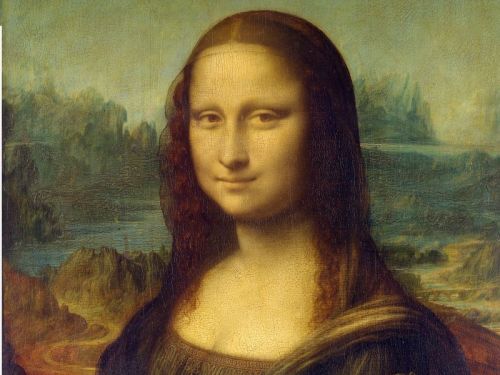Leonardo da Vinci – Book Review
I recently finished reading Leonardo da Vinci by Walter Isaacson. It’s easily one of the most engaging biographies I’ve ever read. Isaacson is a true master of his craft. 5 big hearty stars. Although I prefer the more signal-inducing metric, “would you read this book again?” or “would you recommend this book to a friend.” Yes and yes.

The book goes into an incredible amount of detail about Leonardo, his entourage, and all the various cast of characters at that time of the Renaissance. It also provides a thorough examination of every one of Leonardo’s major works of art – providing the reader with a course in art appreciation. For me, this was perhaps the most powerful part of the book. I finished with a better understanding of fine art and the ways to evaluate and appreciate the works.
This excerpt was one of my favorites, shedding light on the most famous smile in history.

There is other science involved in the smile. From his optics studies, Leonardo realized that light rays do not come to a single point in the eye but instead hit the whole area of the retina. The central area of the retina, known as the fovea, is best at seeing color and small details; the area surrounding the fovea is best at picking up shadows and shadings of black and white. When we look at an object straight on, it appears sharper. When we look at it peripherally, glimpsing it out of the corner of our eye, it is a bit blurred, as if it were farther away. With this knowledge, Leonardo was able to create an uncatchable smile, one that is elusive if we are too intent on seeing it. The very fine lines at the corner of Lisa’s mouth show a small downturn, just like the mouth floating atop the anatomy sheet. If you stare directly at the mouth, your retina catches these tiny details and delineations, making her appear not to be smiling. But if you move your gaze slightly away from the mouth, to look at her eyes or cheeks or some other part of the painting, you will catch sight of her mouth only peripherally. It will be a bit blurrier. The tiny delineations at the corners of the mouth become indistinct, but you still will see the shadows there. These shadows and the soft sfumato at the edge of her mouth make her lips seem to turn upward into a subtle smile. The result is a smile that flickers brighter the less you search for it.
The other major life lesson of the book and of the man Leonardo is to stay curious. Always pursue learning, sometimes just for the sake of learning.
By being around him, viewers are stimulated to observe the little details of nature, like the cause of a dilated pupil, and to regain our sense of wonder about them. Inspired by his desire to notice every detail, we try to do the same.
A few of my other favorite quotes:
Yes, he was a genius: wildly imaginative, passionately curious, and creative across multiple disciplines. But we should be wary of that word. Slapping the “genius” label on Leonardo oddly minimizes him by making it seem as if he were touched by lightning.
A nice reminder of the wonder of pen and paper and the incorrect tendency to dismiss old technologies.
Paper turns out to be a superb information-storage technology, still readable after five hundred years, which our own tweets likely won’t be.
The glory of being an artist, he realized, was that reality should inform but not constrain.
Another theme that comes out in Leonardo’s work is how nature tends to mirror human anatomy.
“The heart is the nut which generates the tree of the veins,”
And finally, Isaacson leaves the reader with a series of life lessons drawn from da Vinci. Here are a few of my highlights.
Seek knowledge for its own sake. Not all knowledge needs to be useful. Sometimes it should be pursued for pure pleasure.
Retain a childlike sense of wonder. At a certain point in life, most of us quit puzzling over everyday phenomena. We might savor the beauty of a blue sky, but we no longer bother to wonder why it is that color. Leonardo did.
Start with the details. In his notebook, Leonardo shared a trick for observing something carefully: Do it in steps, starting with each detail. A page of a book, he noted, cannot be absorbed in one stare; you need to go word by word. “If you wish to have a sound knowledge of the forms of objects, begin with the details of them, and do not go on to the second step until you have the first well fixed in memory.”
Make lists. And be sure to put odd things on them.